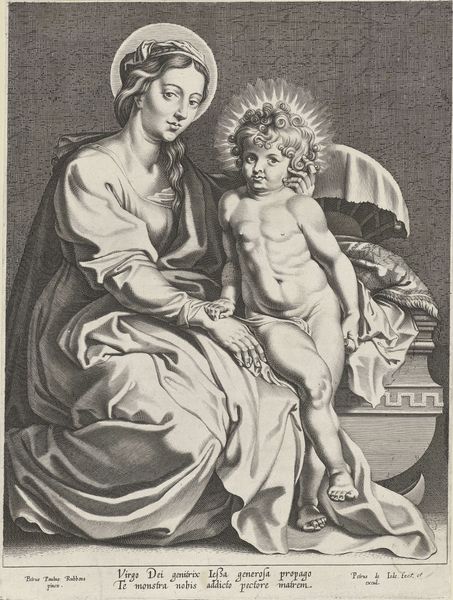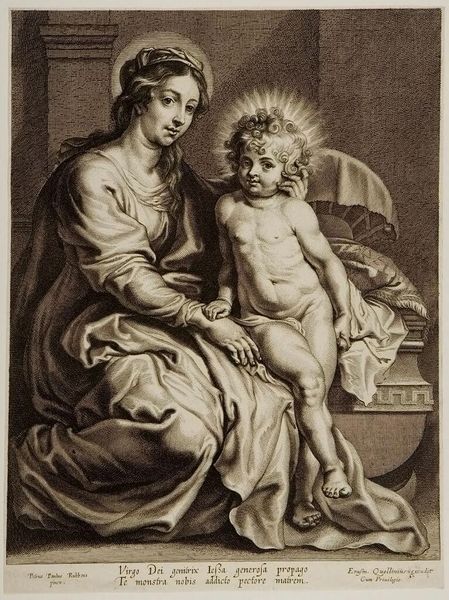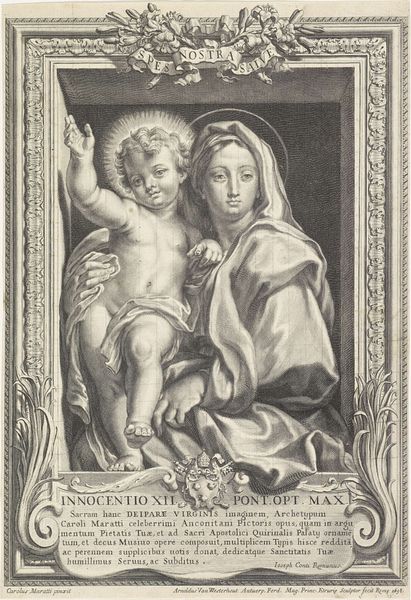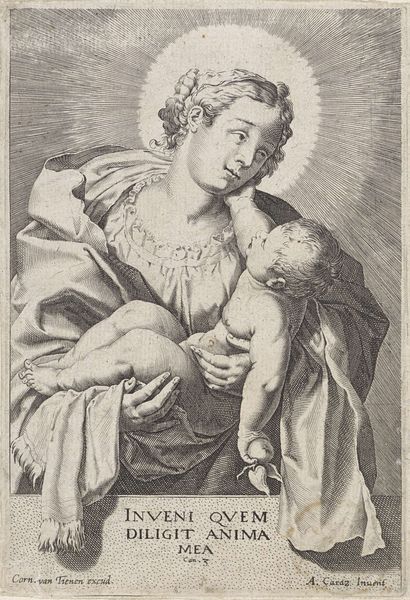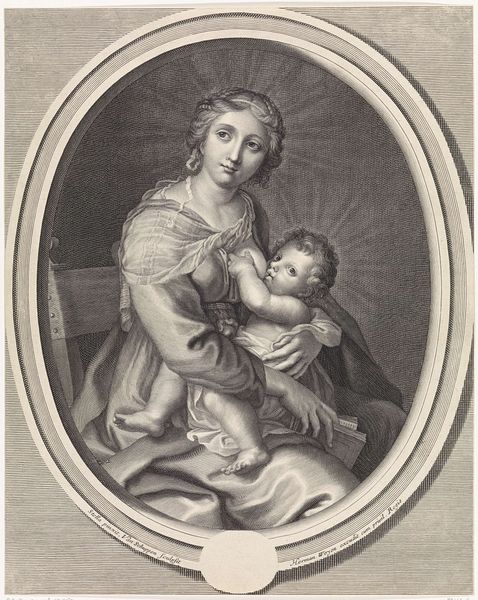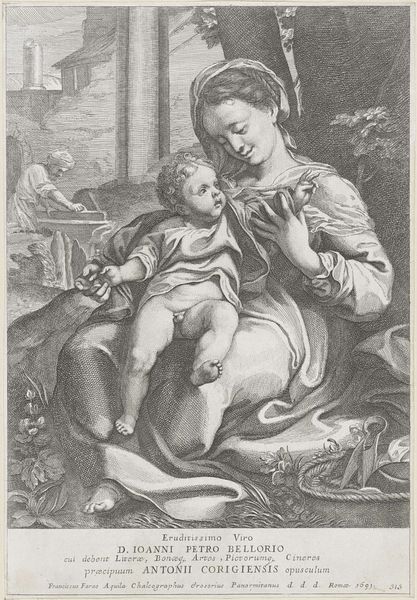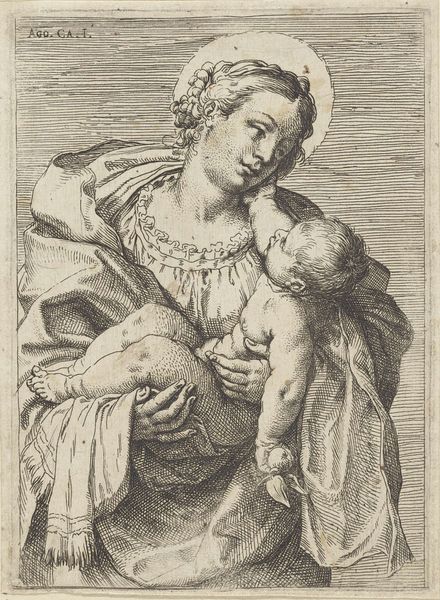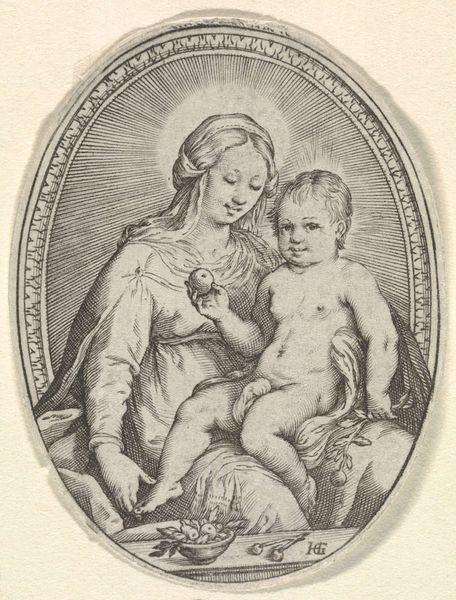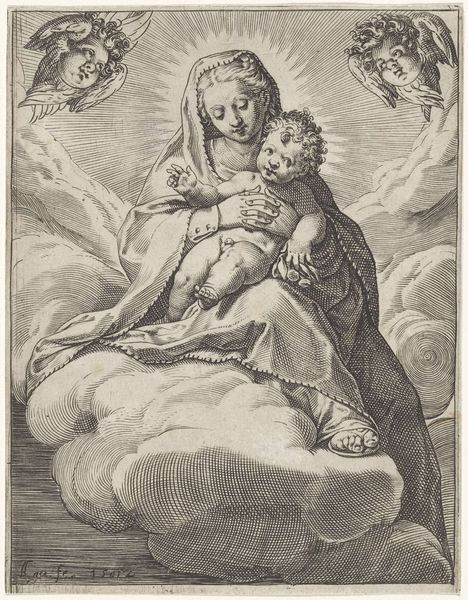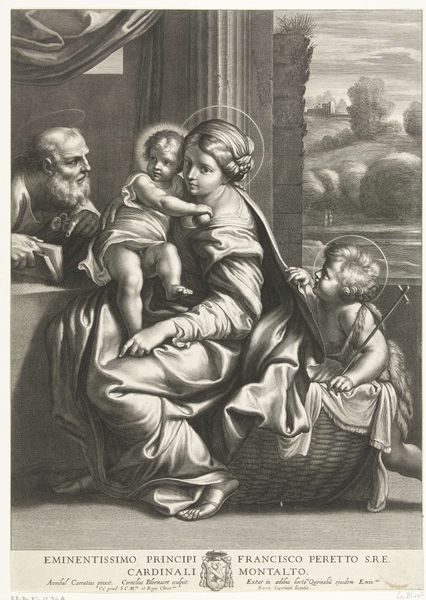
engraving
#
portrait
#
baroque
#
figuration
#
history-painting
#
engraving
Dimensions: height 348 mm, width 264 mm
Copyright: Rijks Museum: Open Domain
Editor: This engraving, "Maria met Christuskind bij wieg," made sometime between 1590 and 1632 by Pieter de Jode I, is currently housed at the Rijksmuseum. It's quite striking, the stark contrast between light and shadow. I’m curious about the Virgin Mary's serene expression amidst all that Baroque drama. What catches your eye? Curator: What a sublime depiction of motherly tenderness. The softness of the engraving truly captures the emotional bond. You know, in that era, these images were like visual sermons, teaching about divine motherhood and the young Christ's blessed destiny. It's almost like witnessing an intimate, almost dream-like scene. See how the light pools around the baby Jesus? That's no accident! What do you think that radiating light suggests? Editor: I guess it's to emphasize His holiness and divinity? It almost makes him look like a tiny sun. Curator: Exactly! The halos weren’t subtle back then. It was all about declaring sacred truths, right there in plain sight. Consider too, the fabric, the luxurious folds hinting at their divine status, their importance. Pieter was one of the most important engravers of the Antwerp school. Don't you feel the incredible attention to detail, especially in the rendering of their garments and faces? Editor: Yes, I noticed how carefully the textures are rendered, even in such a monochromatic palette. It definitely elevates the scene. It makes me wonder, who exactly was this piece trying to reach at the time? Curator: Likely, a wide audience, from the educated elite to the devout commoner, all craving that visual connection to the divine. It's an intersection of faith and artistry, a tangible echo of a specific time. It also highlights how artistic and social conventions can change over time, influencing what is and isn't seen in a work of art.
Comments
No comments
Be the first to comment and join the conversation on the ultimate creative platform.
